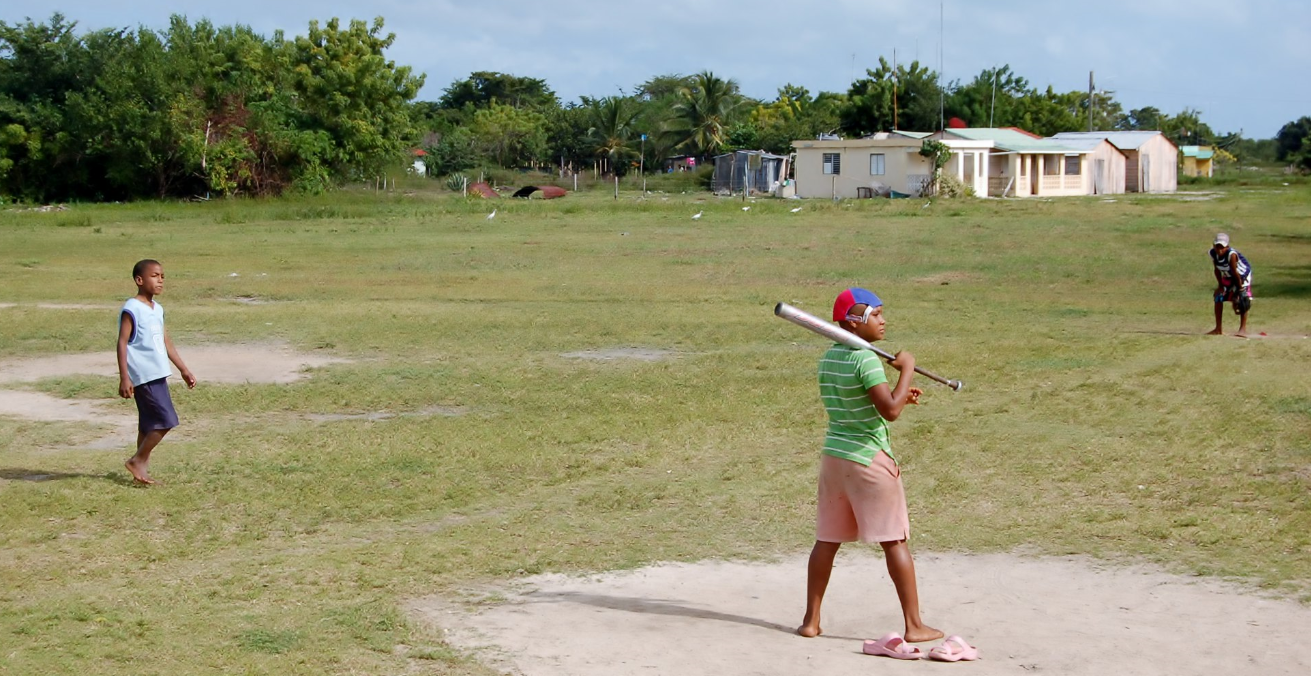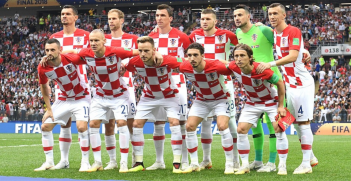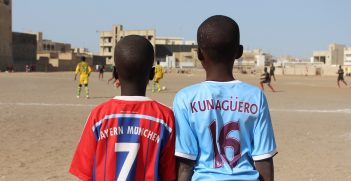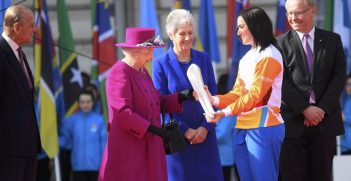The Tropic of Baseball: Dominican Talent and the MLB

Baseball is a defining feature of the Dominican Republic’s national identity. No nation celebrates the game with such verve or sends as many stellar players to the US major leagues, but those who don’t make it big are often exploited by a system that prioritises profits over people.
Baseball may no longer be the national pastime in the United States, but it’s certainly the Pan-Caribbean passion. Both energy and excellence are on display daily in the Dominican Republic (D.R.), a nation of 10,000,000 whose native sons comprise more than a tenth of all North American Major League Baseball (MLB) players and a third of those in the minor leagues. No nation has used baseball more to tell its story to the world. That story is about perseverance, about people who worked hard cutting cane and tending to small farms but played even harder, who overcame the 31-year-long Rafael Trujillo dictatorship, withstood occupation by foreign powers not once but three times, stared down racism in the major leagues, and in the end, beat the “Yanquis” at their own game.
No nation of comparable size has had such singular success in MLB. Though denied access until MLB began to integrate in 1947, Dominicans created a sporting world of their own. Baseball brought Dominicans together, overcoming geographic and class differences and creating a sense of national identity rooted in competition and achievement.
But the D.R.’s baseball success has imperilled it, triggering a feeding frenzy by those seeking to profit from juvenile talent and igniting a power struggle among Dominicans, foreign investors, and MLB. The lives of young boys hang in the balance.
Since Jackie Robinson opened major league baseball to darker-skinned players, Latinos have come to rank among the game’s best players: about forty percent of the players in the 2019 World Series were Latinos or Latino-Americans.
Baseball has become a multi-billion-dollar Caribbean industry centred in the D.R. MLB franchises pay a billion dollars in salaries annually to Latino players, and spend approximately $100 million per season operating some forty year-round baseball academies, mostly in the D.R. They also give out millions in signing bonuses to boys entering the Dominican Summer League, baseball’s biggest professional league and the cornerstone of its player development system. There’s also a Dominican winter league of Dominican-owned teams that field squads of Dominican and U.S. players, many of whom also play in the major or minor leagues.
MLB’s craving for talent has spawned a profitable youth market that at times is akin to trafficking children. Because most of these boys are poor and lack good counsel, they are vulnerable to those seeking to profit from their talent. Two MLB policies make this predatory environment possible.
First, MLB prevents boys from signing contracts until the year they turn seventeen. That creates an opening for self-styled trainers known as buscones (from the Spanish word “buscar” — to search) who snatch boys as young as thirteen, develop their talents, and then peddle them to MLB teams when they’re old enough to sign. Boys usually stop going to school when they begin training with a buscon.
More than a thousand buscones operate in the Dominican Republic alone, getting their hooks into boys they hope to turn into saleable commodities. In return for his speculative investment, the buscon takes as much as a third of a boy’s bonus if he signs. Several operate academies, sometimes backed by U.S. investors and agents who see these kids as a futures market. Higher-end facilities offer comfortable quarters and competent instruction, but many are decrepit accommodations filled with defenceless boys.
For some boys, a buscon’s intervention is salutary. The buscon feeds and cares for them, makes them better players, creates a market for their services, and drives up signing bonuses. But other buscones are predatory figures. They might steal from a boy, enmesh him in career-damaging fraud, or even administer performance-enhancing drugs (PEDs), sometimes veterinary steroids disguised as B-12 shots, to add pop to a boy’s bat or speed to his fastball. Others falsify birth certificates to lower ages, knowing that ballclubs pay more for younger prospects who might have higher upsides. If exposed for PED abuse or lying about his age or identity, a boy loses his bonus and is banned for a period from signing a contract.
The second policy exempts Dominican citizens from MLB’s annual draft. That means they begin their careers as free agents. Consequently, competitive bidding for their services drives signing bonuses for the most sought-after prospects higher. Historically, MLB profited immensely from Caribbean ballplayers, signing them by the hundreds for tiny bonuses—Hall of Famer Juan Marichal signed for $500 in the 1950s; another Hall of Famer, Pedro Martinez, received $6,500 in 1988. But most boys are soon released, and few make it the majors. As MLB became a financial juggernaut and Dominicans became more sophisticated about the industry, buscones were able to create bidding wars for elite prospects. Signing bonuses soared in the 1990s, sometimes topping $3,000,000.
Teams balked at such sums. Nor did they enjoy being made the fool when a steroid-enhanced player’s homeruns turned into lazy fly balls or his fastball lost 10 miles per hour after he stopped juicing (clubs and MLB often test for PEDs). The Washington Nationals were not amused when they paid $1.4 million to 17-year-old Esmailyn ‘Smiley’ González in 2006, only to find out he was neither 17 nor Esmailyn González. Instead, he was 21–year-old Carlos Alvarez Lugo posing as González, his relative, who because of disabilities rarely left his house.
These issues spurred MLB to try to police Dominican baseball and restore its profitable dominion. Results have been mixed. In 2010, MLB tried to crack down on corruption. Drug testing and more rigorous inspection of birth documents led teams to void millions of dollars in signing bonuses. But efforts to register and finger-print young boys before they signed, as well as create an MLB-controlled player development system that would have eliminated the buscones, were halted. The buscones, who controlled most of the players MLB teams wanted to sign, were too entrenched to displace. MLB did cap the amount a team can spend on international signings, cutting costs, and may try again to persuade the MLB Players Association to agree to expand the annual youth player draft to youth from outside the U.S., Canada, and Puerto Rico in the next collective bargaining agreement.
While some Dominicans condemn buscones for exploiting boys, others place the onus on MLB. Some MLB employees have been fired for conniving with buscones to take advantage of boys. Many Dominicans have said that MLB at least offers boys a chance to become successful, despite the odds. They stress that there are few alternatives for boys from poor backgrounds. A few Dominicans, notably former major leaguer Junior Noboa, have built and rented academies to major league clubs. Others—Felipe Alou, Omar Minaya, Manny Acta, Winston Llenas, Moises Alou—have proven themselves as managers, general managers, and owners in the winter or major leagues. They’re taking ownership of the game, but they have not attempted to dislodge the buscones.
For over a century, Latinos have defined themselves through baseball and rejoiced in what they have taken from it. There’s a rhetorical commitment by all parties to protect youth who seek pro careers, but the incidence of PED use, altered birth certificates, and theft from boys suggests that much remains to be done to safeguard youth in this ultra-competitive, profit-driven industry. Latinos have yet to attain power in terms of MLB ownership. The Caribbean represents the last best piece of professional baseball’s soul. Losing that soul to the MLB’s bottom line would leave the sport as little more than a predatory business, and leave the Dominican Republic alienated from a core element of its culture.
University of Pittsburgh historian Rob Ruck teaches and writes about sport, focusing on how people use sport to tell a collective story about who they are to the world. His books includeSandlot Seasons: Sport in Black Pittsburgh (1987), The Tropic of Baseball: Baseball in the Dominican Republic (1991), Rooney: A Sporting Life (2010), Raceball: How the Major Leagues Colonized the Black and Latin Game (2011), and Tropic of Football: The Long and Perilous Journey of Samoans to the NFL. (2018). His documentaries, Kings on the Hill: Baseball’s Forgotten Men (1993) and The Republic of Baseball: Dominican Giants of the American Game (2006), appeared on PBS and NBC.
Dominican Republic Independence Day is celebrated on February 27 in commemoration of the country’s independence from Haiti in 1844.
This article is published under a Creative Commons Licence and may be republished with attribution.





